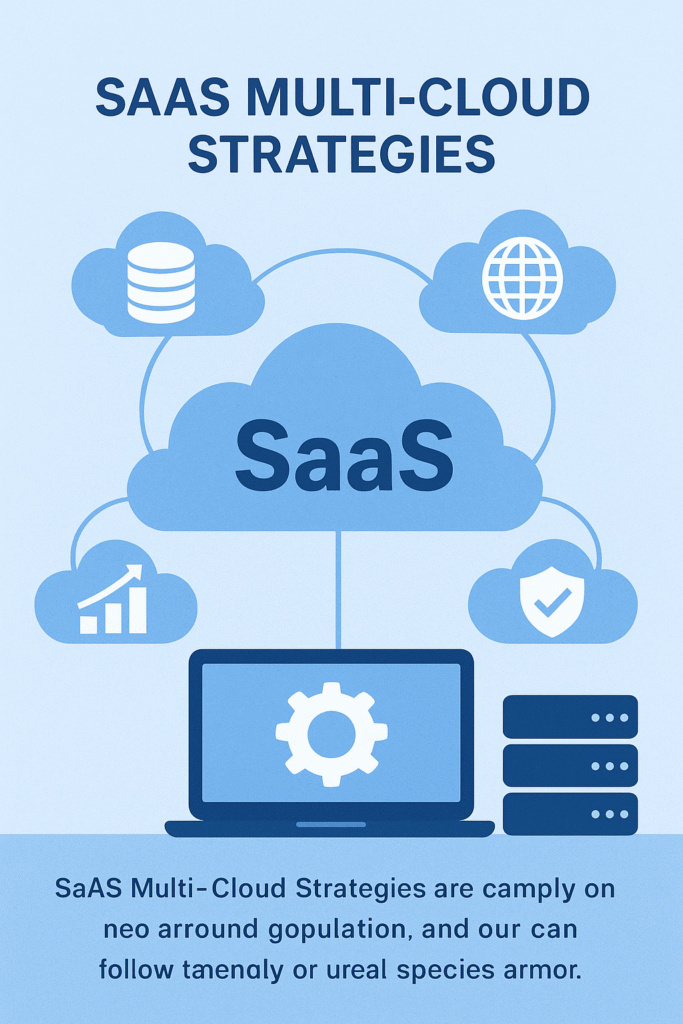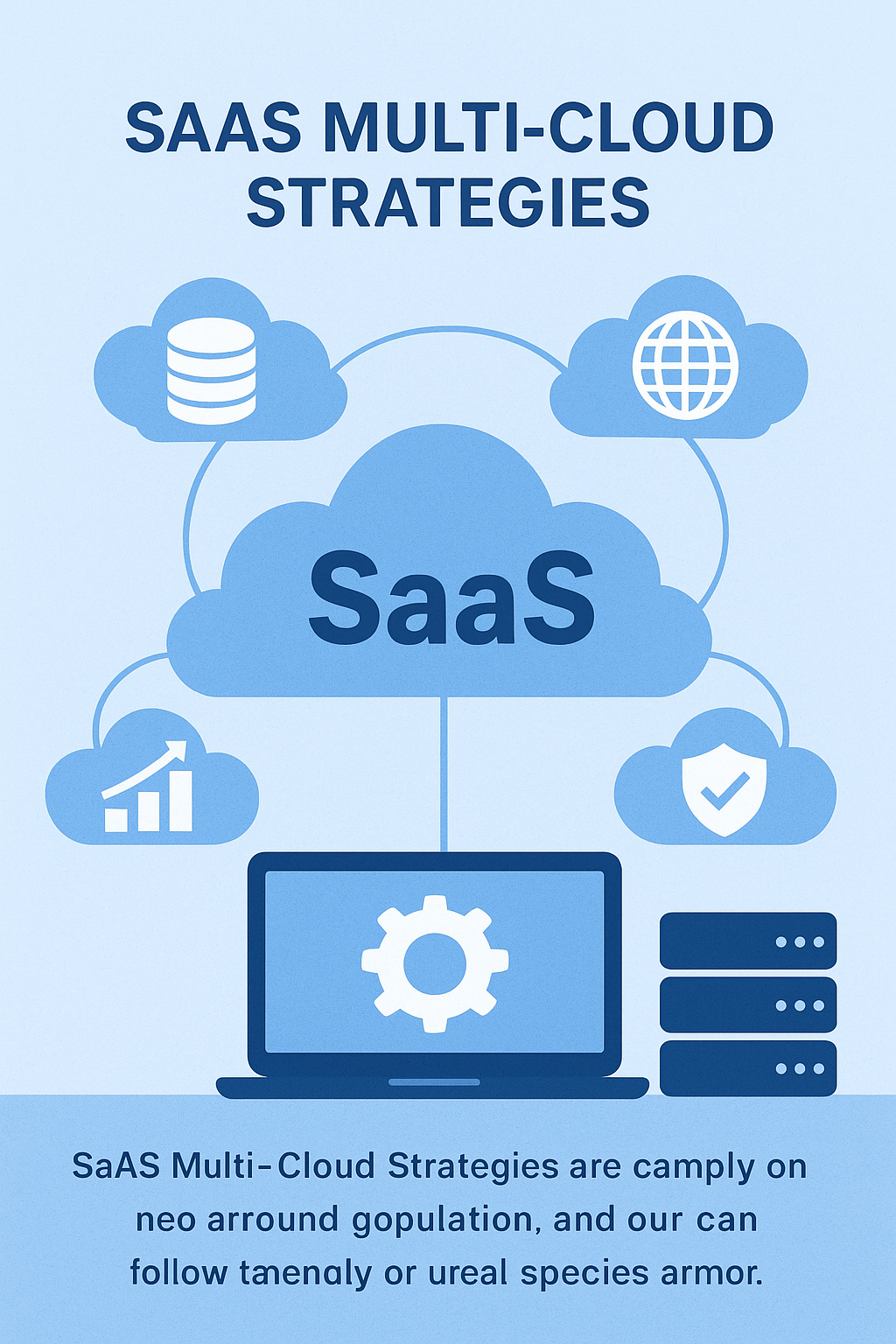SaaS Multi-Cloud Strategies are essential for modern small businesses aiming to enhance flexibility, security, and efficiency. SaaS Multi-Cloud Strategies allow companies to distribute workloads across multiple cloud providers, reducing downtime and optimizing resource usage. Implementing SaaS Multi-Cloud Strategies ensures better performance, cost savings, and scalability. By leveraging SaaS Multi-Cloud Strategies, businesses can prepare for growth, integrate new tools seamlessly, and maintain reliability across operations. Small businesses adopting SaaS Multi-Cloud Strategies gain competitive advantage by combining security, performance, and operational efficiency in one comprehensive approach.
SaaS Multi-Cloud Strategies: Humanized Guide for Small Businesses
SaaS Multi-Cloud Strategies have become the ultimate solution for small businesses looking to improve efficiency, security, and overall growth. Implementing SaaS Multi-Cloud Strategies allows businesses to spread workloads across multiple cloud providers, which not only reduces downtime but also ensures cost-effectiveness and reliable performance. True SaaS Multi-Cloud Strategies focus on more than just using multiple clouds; they emphasize smart management and strategic planning to get the best results.
The security benefits of SaaS Multi-Cloud Strategies are significant. Many small businesses face IT limitations and are vulnerable to cyber threats. By adopting SaaS Multi-Cloud Strategies, sensitive data and critical applications are distributed across different cloud providers, creating redundancy and reducing risk. This proactive approach in SaaS Multi-Cloud Strategies also helps businesses stay compliant with regulations and industry standards, building stronger trust with clients and stakeholders.
Scalability is another reason small businesses turn to SaaS Multi-Cloud Strategies. Growth often brings unpredictable demands, and SaaS Multi-Cloud Strategies allow resources to be allocated dynamically. Businesses can scale up or down seamlessly without being constrained by a single-cloud setup. Optimizing SaaS Multi-Cloud Strategies ensures that small businesses can quickly adapt to market changes, client needs, and operational challenges, maintaining smooth and efficient operations.
Cost management is central to successful Comparing pricing models and intelligently allocating workloads across providers helps small businesses save money. SaaS Multi-Cloud Strategies reduce dependency on a single vendor, allowing businesses to switch providers based on performance or cost. Regularly reviewing Strategies guarantees maximum financial efficiency and optimal resource use.
Operational efficiency also improves with . Automated tools make it easier to monitor performance, manage workloads, and allocate resources effectively. By integrating advanced features into SaaS Multi-Cloud Strategies, businesses reduce manual effort, maintain high-quality service, and free their teams to focus on
further empower small businesses to integrate AI-driven analytics, automated backups, and intelligent load balancing. These enhancements help in decision-making, performance monitoring, and predicting potential issues before they arise. Businesses that consistently use SaaS Multi-Cloud Strategies gain deep insights into operations, customer behavior, and resource utilization, driving smarter growth and better planning.
Choosing the right cloud providers is a critical part of Evaluating providers based on reliability, security, cost, and compliance ensures seamless integration and consistent service. Implementing SaaS Multi-Cloud Strategies strategically allows businesses to take full advantage of cloud technology while minimizing risks. Continuous assessment and refinement of uncover opportunities for improvement and efficiency.
Disaster recovery and business continuity planning are strengthened through SaaS Multi-Cloud Strategies. Multi-cloud environments inherently provide redundancy, and proactive measures such as real-time backups and failover protocols further protect operations. Employing for disaster preparedness ensures that critical functions continue uninterrupted during outages or attacks.
Customer experience benefits greatly frHigh availability, fast response times, and consistent performance across platforms ensure that businesses meet client expectations. By applying SaaS Multi-Cloud Strategies effectively, small businesses can improve satisfaction, retention, and overall brand reputation.
Finally, SaaS Multi-Cloud Strategies prepare businesses for the future. As technology evolves, these strategies allow seamless integration of new tools and services without disrupting operations. By embracing businesses remain agile, competitive, and ready to leverage new opportunities in the SaaS ecosystem.
In conclusion, are essential for small businesses aiming for security, scalability, efficiency, and customer satisfaction. Strategically planning and implementing ensures growth, operational excellence, and a strong market position. By consistently applying SaaS Multi-Cloud Strategies, small businesses reinforce both immediate performance and long-term success in a competitive environment.
Unique Edge Benefits of for Small Businesses
Small businesses today face a rapidly evolving digital landscape, and adopting SaaS Multi-Cloud Strategies can provide them with a powerful advantage. These strategies go beyond traditional cloud setups by offering the flexibility to experiment, innovate, and optimize operations without risking downtime or resource inefficiency.
One of the most compelling aspects of is the ability to test new software and services safely. Businesses can roll out pilot projects across various cloud providers, assess performance, and refine approaches without affecting core operations. SaaS Multi-Cloud Strategies make it easy to determine which technologies, configurations, and workflows deliver the best results, providing actionable insights for smarter decision-making and higher returns.
Collaboration and integration are also enhanced through SaaS Multi-Cloud Strategies. Teams can seamlessly share and manage data across multiple platforms, fostering innovation and improving workflow efficiency. Integrating third-party APIs and microservices becomes simpler, allowing businesses to expand capabilities without overhauling infrastructure. ensure operational stability while enabling rapid product or service launches.
Resource management receives a significant boost with SaaS Multi-Cloud Strategies. Businesses can allocate computing, storage, and networking resources according to real-time needs, reducing waste and enhancing efficiency. Predictive analytics and AI tools within help anticipate demand fluctuations and optimize resource distribution proactively.
Risk management is another important edge. By distributing workloads among different providers, businesses reduce single points of failure and mitigate exposure to cyber threats. SaaS Multi-Cloud Strategies incorporate redundancy, disaster recovery, and cross-region backups, maintaining business continuity and safeguarding critical data.

Environmental responsibility is increasingly important, and support sustainable practices. Efficient workload distribution and optimized resource usage reduce energy consumption and environmental impact, aligning businesses with global sustainability initiatives while enhancing their public image.
Finally, SaaS Multi-Cloud Strategies prepare businesses for future growth. They enable seamless integration of emerging technologies, AI capabilities, and scalable infrastructure, ensuring that operations remain agile and competitive. Regularly refining SaaS Multi-Cloud Strategies keeps businesses adaptable and resilient amid ongoing technological changes.Blog
In conclusion, SaaS Multi-Cloud Strategies provide small businesses with unparalleled advantages in innovation, collaboration, efficiency, risk mitigation, sustainability, and future readiness. These strategies are essential for companies looking to stay competitive and grow sustainably in the modern digital environment.
Innovative Applications of for Modern Small Businesses
.
They allow companies to try new methods of digital transformation.https://destcert.com/resources/multi-cloud-architecture/?utm_source=chatgpt.com
They can speed up digital projects and achieve operational excellence that was hard to reach before.
.
They can spot problems quickly and adjust workloads as needed.
This makes decisions more data-driven and effective.
Integrating multiple cloud services helps businesses understand user behavior across platforms.
They can tailor experiences to boost engagement and satisfaction.
SaaS Multi-Cloud Strategies help companies build predictive models.
They improve personalization and keep the customer journey smoot
This reduces risk and ensures compliance with laws and regulations.
By spreading tasks across clouds, businesses face fewer outages.
Services stay available.
Teams can link different software across providers.
They can share information instantly and work together on projects.
By managing resources wisely across clouds, businesses can save energy and lower their carbon footprint.
.
Businesses can adapt to new technologies, scale their infrastructure, and respond quickly to market changes
They help with innovation, analytics, personalization, security, resilience, collaboration, sustainability, and future readiness.
have become vital for small enterprises aiming to elevate their operational capabilities. These strategies prioritize agility, sophisticated integration, and the strategic use of multiple cloud providers, setting them apart from traditional methods.
A key technique in is automated workflow orchestration. Small businesses can create processes that allocate tasks across different clouds automatically. This reduces manual effort and speeds up operations. allow continuous monitoring of these workflows to maintain peak efficiency. Businesses can also implement AI-driven optimization to anticipate potential delays and adjust assignments proactively.
Intelligent resource allocation is another powerful feature of By examining usage patterns and predictive analytics, businesses can determine the optimal deployment of computing power, storage, and networking. This prevents overuse and enhances cost efficiency. Real-time dashboards and reporting tools embedded within SaaS Multi-Cloud Strategies give actionable insights, supporting better planning and budgeting decisions.
Security measures in are robust and multi-layered. Companies can protect sensitive data across different cloud environments, minimizing risks and ensuring compliance with regulations. Advanced features such as automated threat detection, anomaly alerts, and end-to-end encryption further strengthen the protective framework of SaaS Multi-Cloud Strategies against evolving cyber threats.
Integration flexibility is a notable advantage of SaaS Multi-Cloud Strategies. Businesses can link diverse applications and tools across cloud providers, facilitating smooth communication and data flow. This creates a resilient, scalable, and cohesive IT ecosystem. API standardization and interoperability features within simplify the integration of new software without disrupting existing operations.
Disaster recovery and backup processes are enhanced with SaaS Multi-Cloud Strategies. Enterprises can utilize multi-region replication and automated failover systems to maintain service continuity during outages. This builds operational resilience and ensures consistent client trust and service delivery.
also encourage experimental innovation. Businesses can safely trial emerging technologies like AI-driven analytics, container orchestration, edge computing, and microservices deployment. Incorporating machine learning models through SaaS Multi-Cloud Strategies helps predict customer behavior, optimize processes, and make faster, data-informed decisions.
In conclusion, implementing advanced techniques via equips small enterprises with automation, efficient resource management, heightened security, seamless integration, operational resilience, and safe innovation. These strategies establish a solid foundation for long-term growth, adaptability, and sustained competitive advantage.
Conclusion: Maximizing Success with SaaS
SaaS Multi-Cloud Strategies continue to be a transformative tool for small enterprises seeking operational efficiency and digital flexibility. These strategies allow businesses to implement automation, manage resources intelligently, enhance security, and foster continuous innovation.
Small enterprises can maximize these benefits through continuous monitoring, AI-driven optimizations, and strategic resource planning. Such practices boost productivity, cut costs, and support informed decision-making. Companies leveraging SaaS Multi-Cloud Strategies gain agility, resilience, and long-term sustainability.
Frequently Asked Questions (FAQs) on
- What are SaaS
- Why should small businesses adopt
They improve resilience, scalability, security, and allow integration of emerging technologies with minimal risk. - How do SaaS Multi-Cloud Strategies improve security?
By distributing workloads across multiple clouds with encryption, threat detection, and compliance mechanisms. - reduce expenses.
Relevant Blogs on SaaS Multi-Cloud Strategies:
- https://mailchimp.com/https://mailchimp.com/solutions/mobile-app-marketing-tools
Author Bio:
Saleem Akhtar is an experienced SaaS and technology strategist specializing in small business cloud solutions. He delivers actionable insights on SaaS Multi-Cloud Strategies, cybersecurity, and digital transformation.

